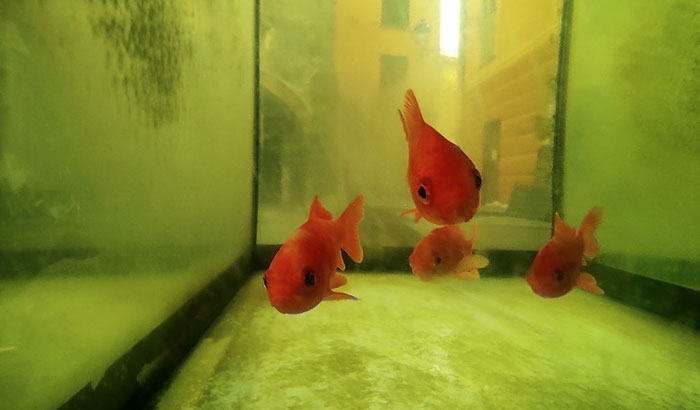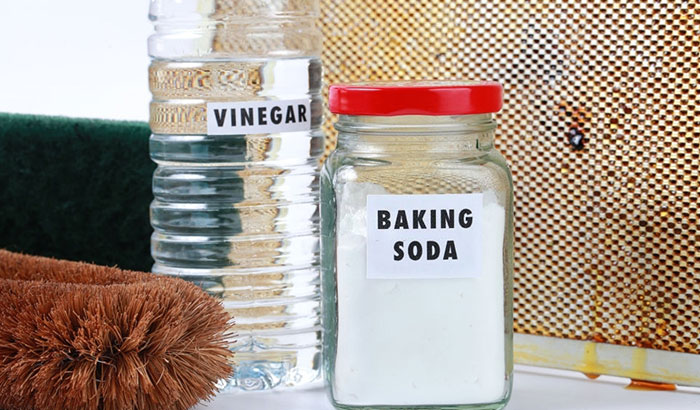You need to clean your aquarium every once in a while. It is necessary especially if you want to have a nice, clean habitat, and environment for your pet fish. A clean aquarium ensures that your fish will remain healthy and will live healthily for a long time.
Cleaning your aquarium, however, depends on the materials and the waste that accumulated in it, and how you want to get rid of it. Some clean their aquarium just to maintain a healthy environment and habitat. Others, however, clean theirs in times where you have a disease outbreak. Whatever the case may be, there are appropriate methods in cleaning aquariums based on purpose.
It is normal for dirt and algae to accumulate in your aquarium. Minerals and other substances may also accumulate, for your pet fish, as a living organism, release certain minerals. Water also contains some minerals which accumulate over time. The minerals may contribute to water hardness which in turn may cause minerals to accumulate as white residue on your aquarium glass.
You must remove and clean the aquarium glass of white residue. A clean, clear aquarium is aesthetically appealing. It is also an indication that your pet fish is living in a healthy, habitable environment. Fortunately, there are easy ways to clean and clear your aquarium glass of white residue.
Contents
The White Residue
But first, what is exactly that white residue forming in your aquarium glass? Those white, hard residues forming in your aquarium glass are mineral deposits coming from your water, pet fish, stones, and other ornaments that comprise the fish habitat. They are mostly comprised of carbonates and lime and eventually accumulate on your aquarium glass over time.
Ways to Clean Aquarium Glass of White Residue
Here are some steps you can take to clear your aquarium glass of white residue. Remember, however, that you have to remove first your pet fish from the aquarium and put them in a temporary but safe fish tank.
Use Vinegar
The accumulated white residue on your aquarium glass is of alkaline properties. One great way of removing or neutralizing materials of alkaline properties is to use substances that have acidic properties or high acidic content. It helps in removing base materials that have accumulated on whatever surfaces.
The most common household substance that can do this job for your aquarium glass is, of course, vinegar. Usually used in cooking, vinegar can be a good disinfectant and can be used to remove deposits and even organisms that accumulate on a particular surface.
Here are the steps to clean your aquarium glass of white residue using vinegar:
- Remove and drain the aquarium of all the water. Remove the ornaments. There is no need to remove gravel, rocks, and sand as long as you can put something that can prevent them from spilling once you turn the aquarium to the side. It can be a towel or paper.
- Get a spray bottle and put some vinegar on it.
- Spray some vinegar on the aquarium glass, turn it on its side, then spray some vinegar. Apply more vinegar to parts that have large deposits of white residue.
- Wait for 10 to 20 minutes to allow the vinegar to soften the white residue and mineral deposits.
- Get a moist pad, cloth, or towel. Then remove the deposits of white residue on the glass.
After clearing the glass of all the white residue, rinse the aquarium glass with water. This is to ensure that no excess vinegar remains on the glass. It might mix with water, which will affect the ph level of the water in the aquarium, so better be sure that no excess vinegar remained on the aquarium glass.
Use a Scraper
If the deposits of white residue are quite hard and cannot be removed using a towel, pad, or cloth, you can use a scraper to remove the residue. Scrape the residue from the aquarium glass. Do it gently so as not to scratch the glass.
Be aware of the scraper that you use. Some glass is quite sensitive and can easily be scratched and damage. Do it repeatedly till you have removed all the deposits of minerals and white residue from the aquarium glass.
Use Aquarium Cleaners
We have all kinds of disinfectants, detergents, and cleaning materials in our house. They are, however, not suitable in cleaning your aquarium. In case that white residue cannot be removed using vinegar, you can use some aquarium cleaners to remove mineral deposits, white residue, and other stains in your aquarium. Aquarium cleaners are available in most pet shops and stores.
In using the aquarium cleaner, you can follow the steps already mentioned with regards to vinegar. After doing those steps, apply the aquarium cleaner to the aquarium glass. Make sure to follow the instructions indicated in the aquarium cleaner, for they are not all the same.
You can also use aquarium cleaner to clean the outside walls of your aquarium. It can also be used to clean the aquarium ornaments and decorations. Don’t forget to rinse the aquarium and all the ornaments with water after using and applying the aquarium cleaner to make sure that it won’t mix with aquarium water.
Preventing the accumulation of mineral deposits and white residue will also go a long way in maintaining your aquarium. Make sure that the water hardness and ph level are just right to prevent faster accumulation of white residue in your aquarium glass.
Use ornaments and decorations that do not easily shed or release minerals in the water to prevent faster, unnecessary water hardness. This will help in preventing the accumulation of white residue in your aquarium glass. Less white residue means a healthier environment for your pet fish. It also means less cleaning time, and more time for other things.
Conclusion
It is not difficult to remove mineral deposits and clean aquarium glass of white residue. It is very basic and will not take much of your time. As a fish-keeping aficionado, you must maintain properly your aquarium tank. It will give your pet fish a nice habitat, a good and healthy environment, on which they can thrive.


